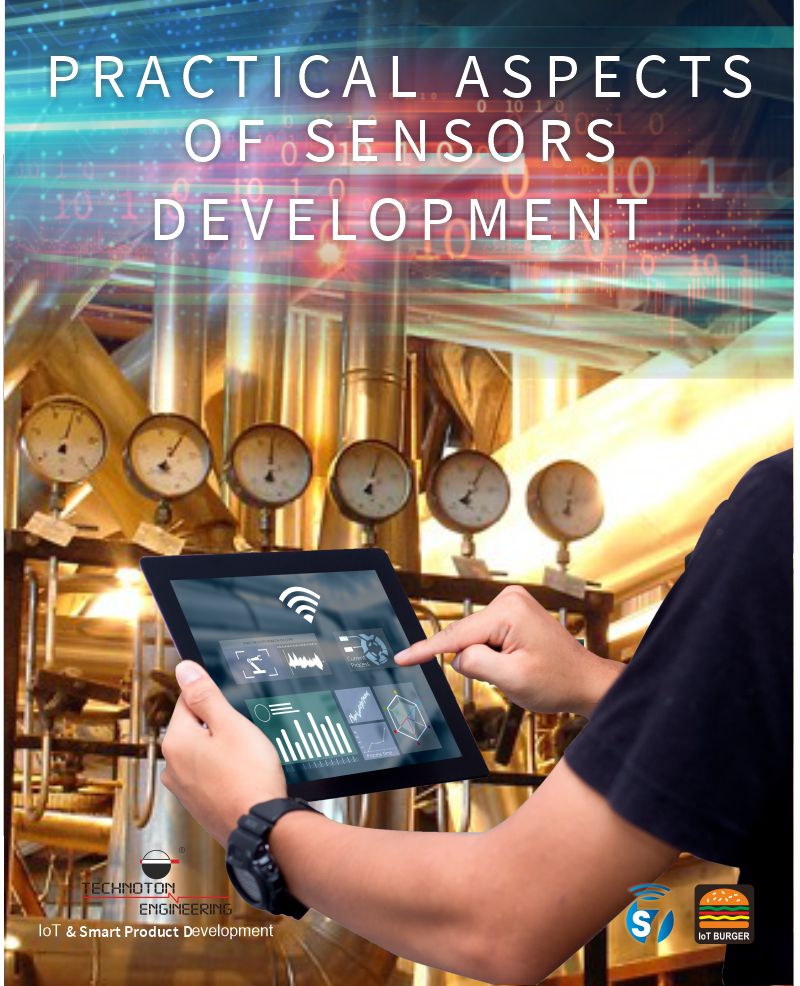As an engineering team with 20 years of experience, we`d like to share some practical view on how sensors may differ from each other. When we prepare a statement of work, we always ask our clients about sensor application area and which tasks it should solve. Work in extreme conditions, level of accuracy, smart functionality are just a few points that affect the market price. The more the sensor can do and the more it can withstand, the more expensive it is for customers.
Let's analyse the main parameters and see in what situations they are important.
Sensor application conditions
Sensor operating temperature - at what temperature the sensor can operate and display specific data. Typically, sensors can withstand temperatures from -30 ° C to + 40 ... + 85 ° C. If the room temperature is low or high, for example, you need to measure something in the freezer, you will have to choose a more robust sensor. Machine tools sometimes heat up or cool down to extreme temperatures too - this should be known and taken into account when you choose a sensor.
Housing protection - how the sensor is protected from moisture, dust and shock. Sensors on machine tools usually require serious protection from dust or pressure. Sometimes high IP enclosure rating is required.
Measurement accuracy - to what proportions the sensor fixes the value and what is its error. For example, for a temperature sensor in an office space, an accuracy of up to a degree is quite enough - it doesn't matter, + 20 ° С there or + 20.3 ° С. But when temperature in manufacturing matters, accuracy is important. Then you need to choose sensors more precisely.
Measurement range - the minimum and maximum value that the sensor is able to capture. For example, if the measurement range of the thermometer is up to 50 ° С, 60 ° С it will show as 50 ° С - the sensor is simply incapable of more. The measurement range must be selected depending on the required accuracy and the values that are encountered in your work.
Communication stability. How far is the sensor capable of transmitting data, whether the signal from it is afraid of interference and obstacles. The larger the enterprise, the more interference in the room, the more stable the sensor must be chosen. Otherwise, important data can be lost.
Size and weight. These indicators are important if the sensor needs to be installed in a predefined space or on a small device. Generally, the smaller and lighter the sensor, the more expensive it is.
Industrial IoT Smart Sensor functionality
Secondary transformation - Secondary transformation converts one physical value into another according to a calibration table. It simplifiers automation system as no customizations are required on monitoring software.
Filtration and Thermocorrection - The secondary transformed value is to be filtered: filtering median removes random jumps of the signal, smooths evenly distributed noise. Thermocorrection uses an internal or external temperature sensor to take into account dependence of a measured value from temperature.
Events detection - Event is a sudden change of a parameter relatively to a set value or a mode change, or an appearance of faults. This function initiates a programmed action to alarm a system manager about emergency.
Self-diagnosis - The function is for monitoring internal signals for evidence of faults. Smart IIoT sensor can carry out self-diagnosis of all possible faults that might arise.
Reports generation - Reports composition can be configured both in production and in the process of operation. Each report is attached to a specific event and sent to the server when this event occurs. Scheduled reports - are among demanded features too. In the absence of communication, the reports are stored in the buffer usually.
Network communication - Sensors can work together in a wired or wireless networks. Wireless networks fit perfectly to solve remote monitoring task yet wired networks are designed for real-time processes.
Technoton Engineering offers a new smart sensor and IIoT sensor development services using its time-tested technology. The results of hard work since 2000 are represented in innovative hardware & software ready Smart Sensor Platform.
Thanks to Technoton Engineering smart sensor platform and verified technologies, we do custom smart sensors & IIoT sensors development faster, saving up to 90% time on R&D. It`s real because all we need is only to customize our solutions for new tasks. Smart sensor platform is time tested in a harsh environment, includes industrial-grade components and is used regularly for telematics sensor, BLE sensor, NB-IoT sensor with MQTT protocol development.
For more information about business opportunities, please contact us!

